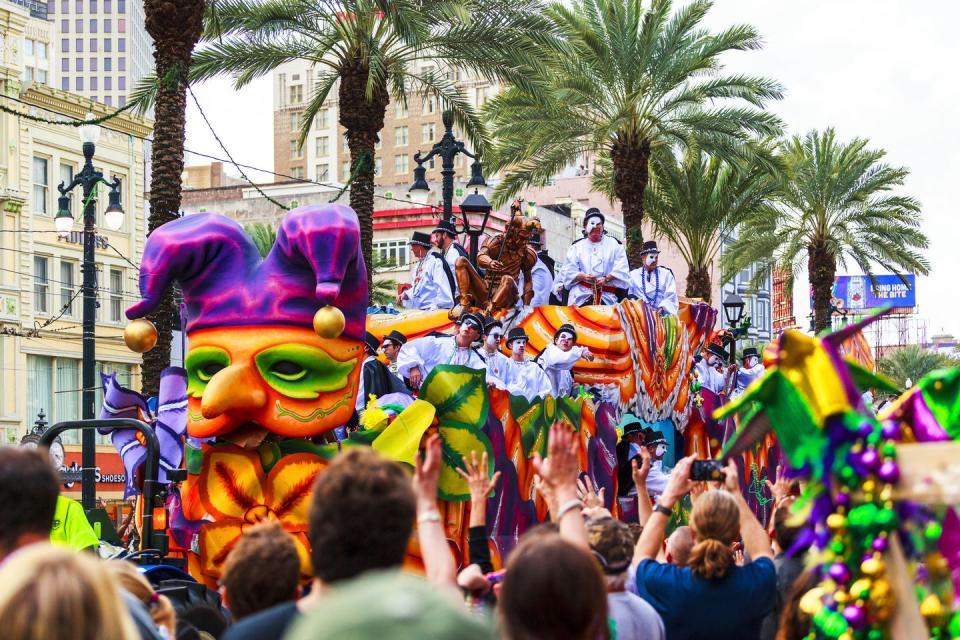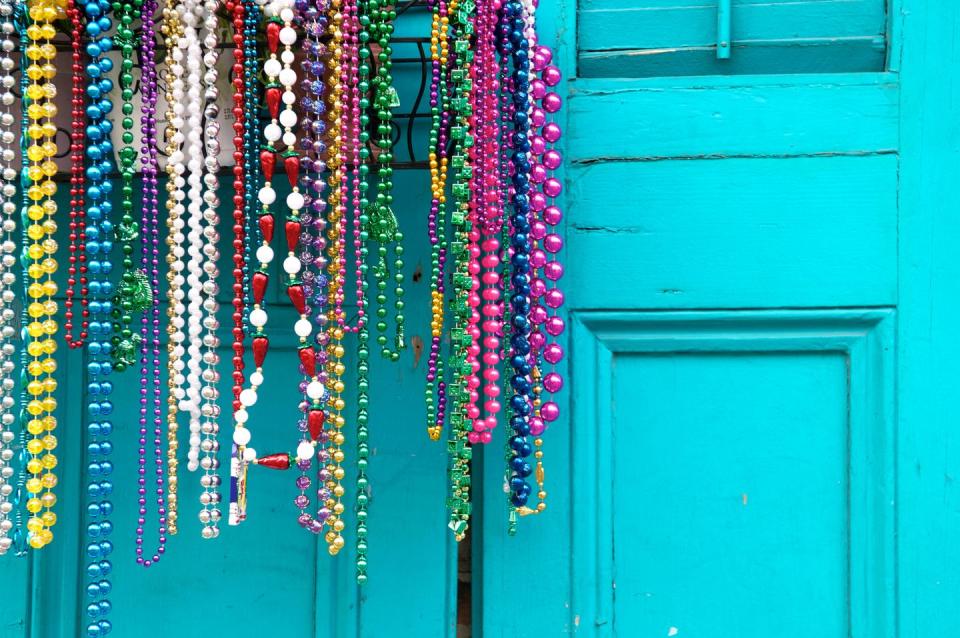What's the History of Mardi Gras? What You Need to Know About the Pre-Lent Party's Origins
Mardi Gras is almost here! With the early Easter date in 2024, Fat Tuesday comes early too (mark your calendars for February 13!). The event likely brings to mind parties, parades, and masks in green and gold, and purple. You might have feasted on a colorful sprinkle-topped king cake or know that it comes right before Lent, the season leading up to Easter. But what is the history of Mardi Gras?
We're here to help answer that question with fun facts about Fat Tuesday and all that comes before it in carnival season and after it in Lent. With your newfound knowledge, you might be looking up trips to New Orleans or Mobile to see all of these festive Mardi Gras traditions with their symbols and meanings celebrated in action. Or at the very least you'll be up checking when Mardi Gras is this year and next and ready for throwing some beads and planning a party, big or small. And now for that Mardi Gras history lesson...
Why do we celebrate Mardi Gras?
Mardi Gras's roots go all the way back to pagan spring festivals thousands of years ago. The day has similarities to the raucous Roman festivals of Saturnalia and Lupercalia. Once Christianity came to Rome, religious leaders tried to blend pagan traditions with Christian traditions for a smoother transition. What resulted was a festival where people drank, feasted, danced, and partied before the abstinent and somber period of Lent began.
However, some experts disagree and say that this festivity actually began as a response to the Catholic Church banning sex and meat during Lent. They say this then lead to people partying and indulging as much as they could before Lent started. In this narrative, experts believe that Church leaders encouraged the rumors of pagan roots in an effort to quell the festivities.

Some don't realize that while Mardi Gras is always the Tuesday before Lent, the actual season begins in January. Three Kings’ Day, which falls on January 6, is not only the end of the 12 days of Christmas, but it is also marks the beginning of Carnival.
Where did Mardi Gras originate?
While the holiday could have pagan Roman roots, it didn’t become known as “Mardi Gras” until it reached France and then spread throughout Europe. In England, it became known as Shrove Tuesday or Pancake Day, which is still popular today (you can imagine what they eat). European colonists later brought the huge celebrations to the Americas, where it became Carnival Tuesday in Caribbean nations.

When did Mardi Gras start in America?
In 1699, Mardi Gras is said to have made its way to North America, thanks to French-Canadian explorer Pierre Le Moyne d’Iberville. He settled down near present-day New Orleans and brought the tradition with him.
Where the first official celebration actually happened, however, is up for constant debate. Both Mobile, Alabama, and New Orleans, Louisiana, are said to have hosted the first Mardi Gras. Some say that Alabama holds the title on a technicality—the city was officially founded over a decade before the Big Easy.
Regardless of which city held the event, it’s known that the festivities had become common practice by the 1730s. In 1837, New Orleans hosted its first Mardi Gras parade.

What does Mardi Gras mean?
In French, Mardi means “Tuesday” and gras means “fat.” That’s why the day is also referred to as Fat Tuesday. The word originated in France and was what people used to describe the day before Ash Wednesday, when they would binge on rich foods such as meat, eggs, milk, and cheese before Lent began.
You Might Also Like
